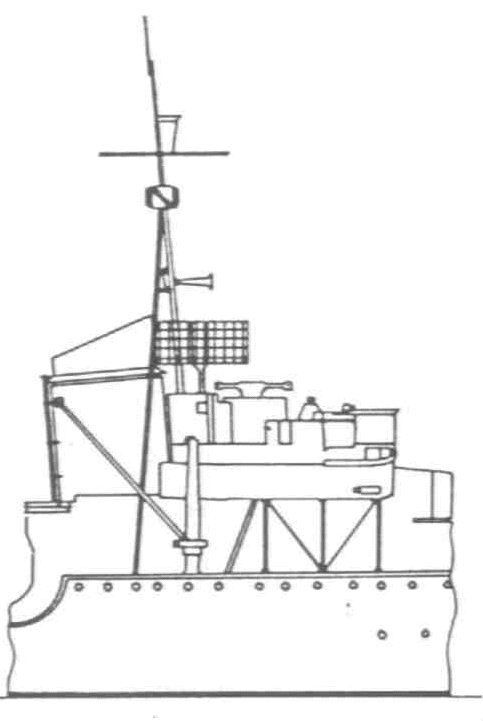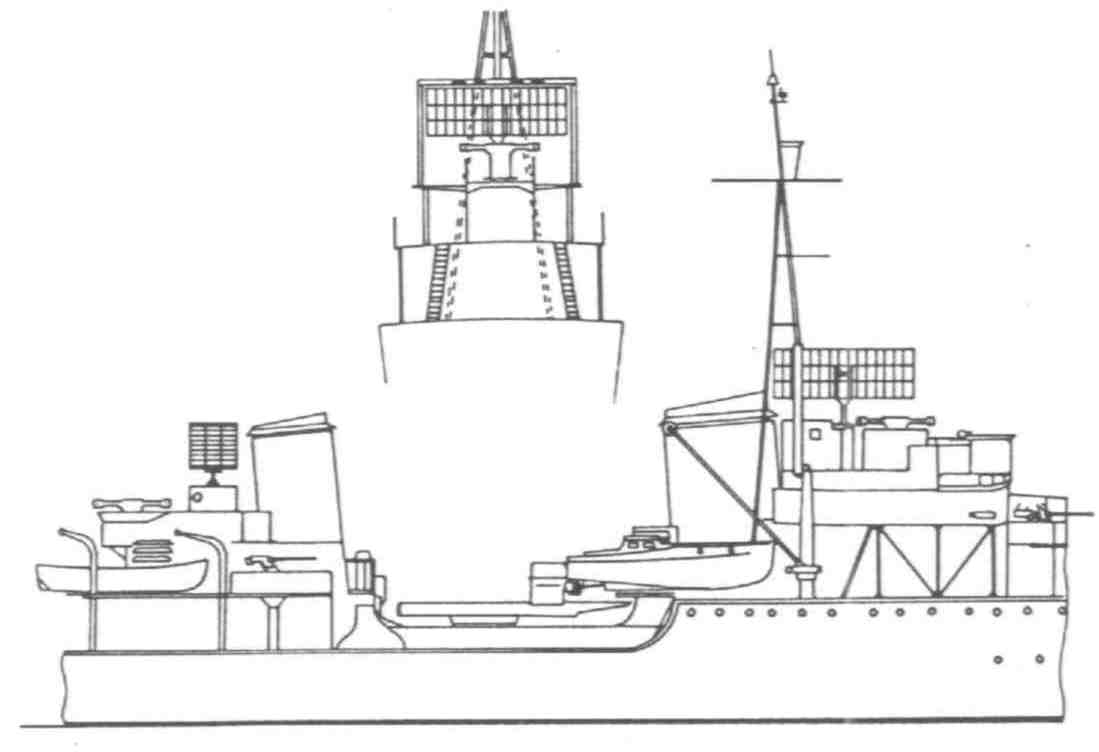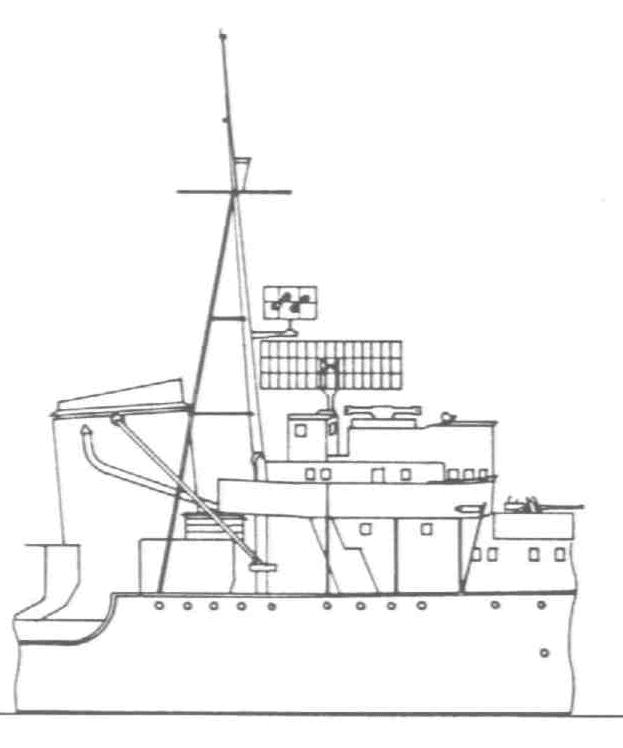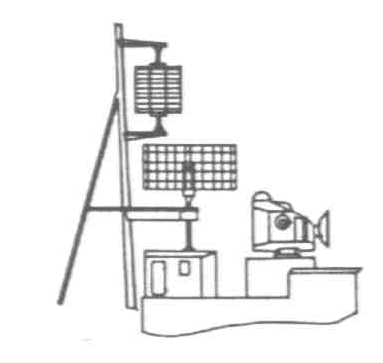| Destroyers
The radar equipment of German destroyers
followed a standard pattern, and only at the end of the war do we find
some individual layouts. The first standard equipment was the FuMO 21 (Zerstörerdrehsäule)
with a 2m x 4m mattress installed above a special radar-office between
foremast and bridge. In earlier types, with their short bridges, the frame
could not be trained over its full arc but all German destroyers were in
any case limited to this bearing angle by the mast. From the summer of
1943 the improved FuMO 25, with 2m x 6m mattress, was introduced, and was
first fitted in the older boats.
To fully train the frame a distinctive
'goal post' (Tormast) mast was developed, the later type having sufficient
space around their radar office for this structure. From the summer of
1944 some boats were fitted with a FuMO 63 Hohentwiel-K in place
of the after searchlight platform, and a FuMB 6 Palau on a yardarm
of the foremast. The passive equipment consisted of four fixed Sumatra
dipoles situated either around the forward searchlight sponson, or at the
level of the tripod junction.
Postwar photographs show the usual variety
of small passive antennas - the omni-directional round-dipole of FuMB 3
Bali,
the conical IFF antenna of FuME 2 Wespe-G and the diagonal 9cm dipoles
of the FuMB Tunis forward of a small cheese-type reflector. The
location of these antennas varies, but as they were small and light they
were usually fitted high on the foremast.
A most interesting system was developed
for the type 1944 destroyer Z52. It consisted of an AA director,
similar to US Navy types, fitted with the 1.5m parabolic dish antenna of
a FuMO 231 Euklid. In next stage of development, it was planned
to switch down the set to 3cm wavelength to become the Euklid-Z.
|

Picture 9.1
Z1934A class
With FuMO 21 on
the bridge and four fixed Sumatra antennas on the foremast on Z
5, 1941 - autumn 1943 |

Picture 9.2
Z1934A class
"Z 5 (Paul Jacobi)"
After searchlight platform
removed and replaced by radar office and antenna for FuMO 63 Hohentwiel-K,
mid 1944 - May 1945
The distinctive
goalpost mast (inset transverse view) for the FuMO 24/25 antenna
at the rear of the bridge. At the foremast head is the conical antenna
for FuME Wespe-G and on the spur below that round dipole of the
Bali
set, autumn 1943 - May 1945 |

Picture 9.3
Z1936A class
FuMO 24/25 radar on
the bridge of Z25 with office moved sufficiently to allow full rotation
of antenna. The FuMO 24/25 was replaced by a FuMO 21, with smaller 2m x
4m mattress antenna, in the same position 1944. The antenna on the foremast
spur is a FuMB 6 Palau and that on the masthead is a FuMB 3 Bali. |

Picture 9.4
Z1936A (Mob)
class
The drawing shows the
basic FuMO 21 onboard of Z38 which was carried until the end
of the war and the four fixed Sumatra antennas fitted around the
foremast searchlight platform and on the after edges of the mast struts.
Note the differences from the 1963A type: curved forward funnel cap, height
of the tripod struts and square forward edge to bridge wing. |
 |
Picture
9.5
1944 Type
Destroyer, Z52
The uncompleted Z
52 would have had an impressive radar outfit. The gunnery radar FuMO
231 Euklid was to be combined with the 3D stabilized bridge director,
carrying a 1.5m diameter parabolic dish antenna. The twin 128mm DP gun
turrets would have been the first genuine radar controlled armament in
a German warship. Other radar equipment is uncertain, the larger antenna
having dimensions of 2m x 4m although FuMO 21 was by this time obsolete;
the antenna on the foremast was either for a FuMO 63 Hohentwiel-K
or a FuMB 6 Palau. |
|